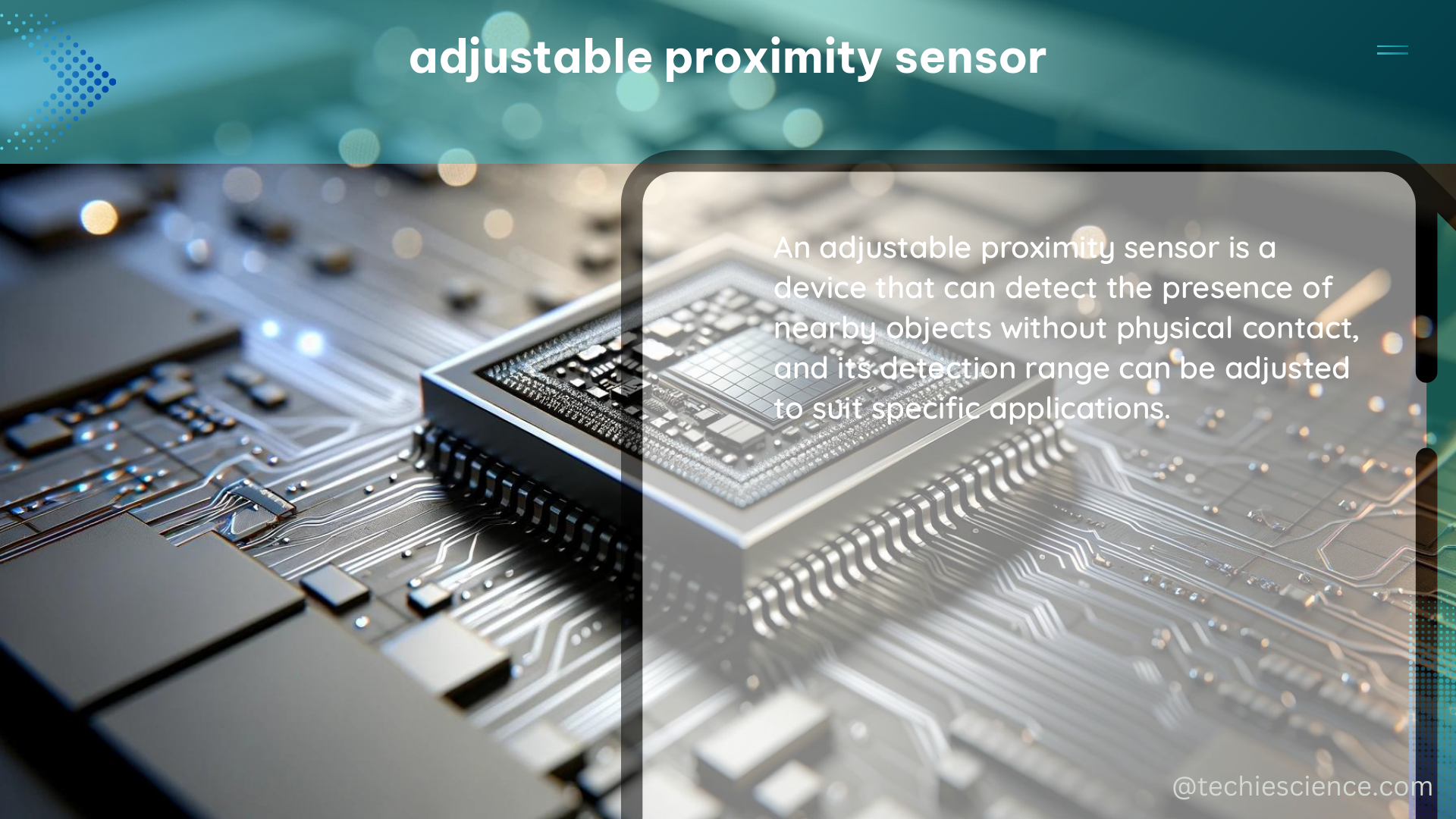An adjustable proximity sensor is a versatile device that can detect the presence or absence of an object within a specific range, and its detection range can be adjusted to suit various applications. These sensors are widely used in industrial automation, robotics, security systems, and even in everyday consumer electronics. In this comprehensive guide, we will delve into the technical specifications, applications, and measurable data points of adjustable proximity sensors.
Understanding Adjustable Proximity Sensors
Adjustable proximity sensors are designed to detect the presence or absence of an object within a specific range, and they can be adjusted to change the detection range. These sensors typically use various technologies, such as infrared (IR), ultrasonic, or capacitive sensing, to detect the proximity of an object.
The key technical specifications of an adjustable proximity sensor include:
-
Detection Range: The distance at which the sensor can detect the presence of an object. This range can be adjusted to suit different applications, with some sensors having a detection range of up to 200 mm.
-
Field of View: The angle at which the sensor can detect objects. This can vary from a narrow 15° field of view to a wider 24° field of view, depending on the sensor model.
-
Response Time: The time it takes for the sensor to detect and respond to the presence of an object. Adjustable proximity sensors can have response times ranging from 1 kHz (1,000 detections per second) to 100 Hz (100 detections per second).
-
Power Consumption: The amount of power required by the sensor to operate. Adjustable proximity sensors can have power consumption as low as 5 mW or as high as 20 mW, depending on the specific model.
Applications of Adjustable Proximity Sensors

Adjustable proximity sensors have a wide range of applications, including:
-
Industrial Automation: These sensors are used in manufacturing processes to detect the presence or absence of objects, such as in assembly lines, packaging, and material handling.
-
Robotics: Adjustable proximity sensors are used in robotic systems to detect and avoid obstacles, as well as to control the movement and positioning of robotic arms.
-
Security Systems: Proximity sensors are used in security systems to detect the presence of intruders or unauthorized access to restricted areas.
-
Consumer Electronics: Adjustable proximity sensors are found in various consumer electronics, such as smartphones, tablets, and laptops, to detect the proximity of the user’s face or hand for features like screen dimming or gesture control.
-
Automotive Applications: Proximity sensors are used in vehicles for features like parking assistance, blind spot detection, and automatic braking systems.
Measurable Data Points of Adjustable Proximity Sensors
Adjustable proximity sensors can provide a wealth of measurable, quantifiable data that can be used to analyze and optimize their performance. Some of the key data points include:
-
Detection Range: The actual distance at which the sensor can reliably detect the presence of an object, which can be measured and compared to the sensor’s specifications.
-
Field of View: The angle at which the sensor can detect objects, which can be measured and compared to the sensor’s specifications.
-
Response Time: The time it takes for the sensor to detect and respond to the presence of an object, which can be measured using high-speed data acquisition equipment.
-
Power Consumption: The amount of power required by the sensor to operate, which can be measured using a power meter or a current sensor.
-
Signal Attenuation: The reduction in signal strength as the distance between the sensor and the object increases. This can be measured by computing the difference between the received and transmitted power, and can be used to estimate the proximity of objects.
-
Proximity Event Detection: The number of proximity events detected by the sensor over a given time interval, which can be used to characterize social contact patterns or other proximity-based phenomena.
By understanding and measuring these data points, users can optimize the performance of adjustable proximity sensors for their specific applications, ensuring reliable and accurate detection of objects within the desired range.
Conclusion
Adjustable proximity sensors are versatile and powerful devices that can be used in a wide range of applications, from industrial automation to consumer electronics. By understanding the technical specifications, applications, and measurable data points of these sensors, users can leverage their capabilities to enhance their products, processes, and research. Whether you’re a DIY enthusiast, an industrial engineer, or a researcher, this comprehensive guide on adjustable proximity sensors will provide you with the knowledge and insights you need to make the most of these remarkable devices.
References:
- Data Tabulation/Recording of Proximity Sensor using Arduino, https://forum.arduino.cc/t/data-tabulation-recording-of-proximity-sensor-using-arduino/578666
- Is there a way to get the precise distance of a proximity sensor from an object, https://stackoverflow.com/questions/13047944/is-there-a-way-to-get-the-precise-distance-of-a-proximity-sensor-from-an-object
- Sensors for daily life: A review, https://www.sciencedirect.com/science/article/pii/S2666351121000425
- Using wearable proximity sensors to characterize social contact patterns in a rural village in Malawi, https://epjdatascience.springeropen.com/articles/10.1140/epjds/s13688-021-00302-w
- Sensor-based proximity metrics for team research. A validation study across three organizational contexts, https://www.ncbi.nlm.nih.gov/pmc/articles/PMC8062328/

The lambdageeks.com Core SME Team is a group of experienced subject matter experts from diverse scientific and technical fields including Physics, Chemistry, Technology,Electronics & Electrical Engineering, Automotive, Mechanical Engineering. Our team collaborates to create high-quality, well-researched articles on a wide range of science and technology topics for the lambdageeks.com website.
All Our Senior SME are having more than 7 Years of experience in the respective fields . They are either Working Industry Professionals or assocaited With different Universities. Refer Our Authors Page to get to know About our Core SMEs.